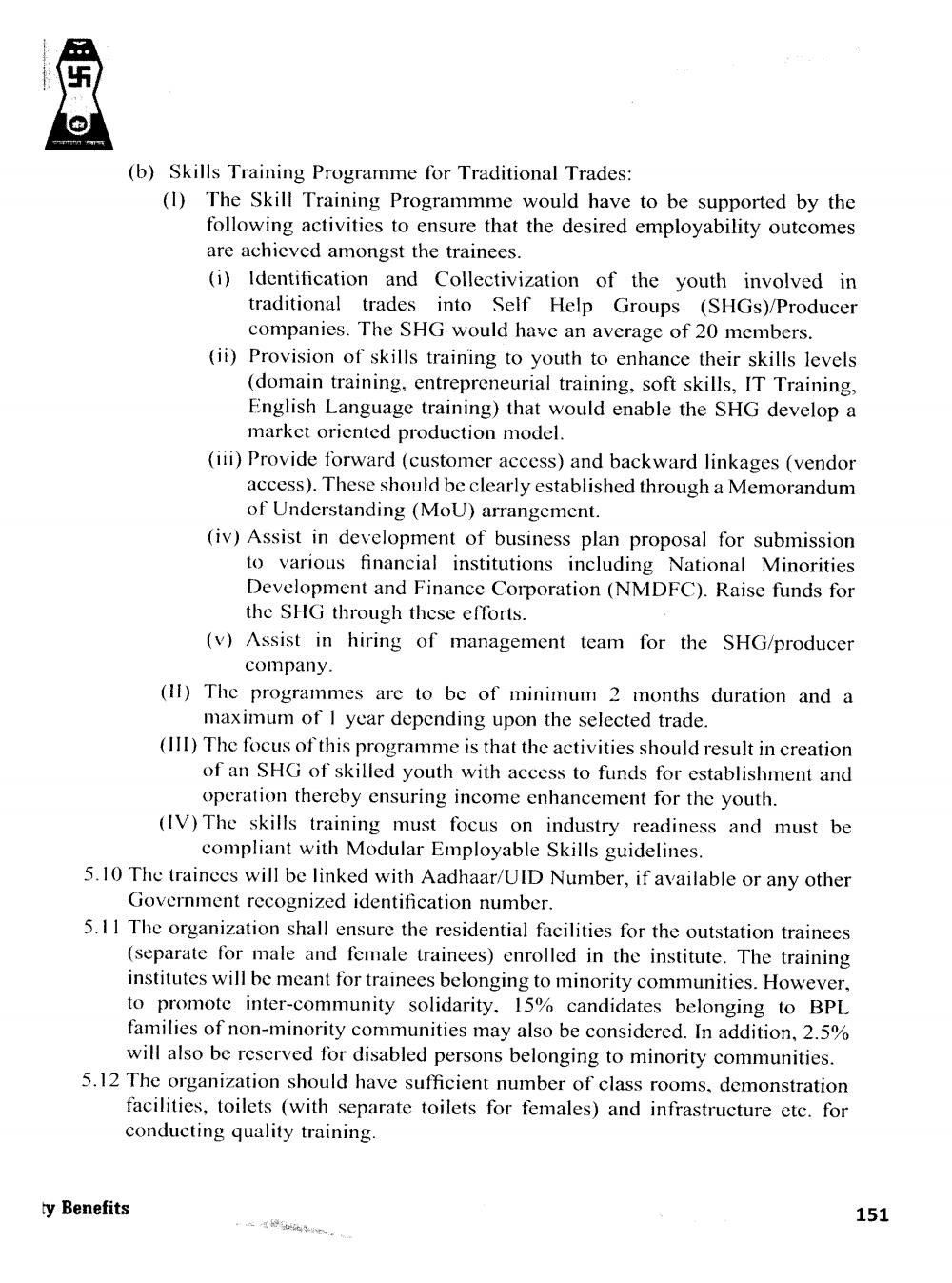________________
(b) Skills Training Programme for Traditional Trades: (1) The Skill Training Programmme would have to be supported by the
following activities to ensure that the desired employability outcomes are achieved amongst the trainees. (i) Identification and Collectivization of the youth involved in
traditional trades into Self Help Groups (SHGs)/Producer
companies. The SHG would have an average of 20 members. (ii) Provision of skills training to youth to enhance their skills levels
(domain training, entrepreneurial training, soft skills, IT Training, English Language training) that would enable the SHG develop a
market oriented production model. (ii) Provide forward (customer access) and backward linkages (vendor
access). These should be clearly established through a Memorandum
of Understanding (MoU) arrangement. (iv) Assist in development of business plan proposal for submission
to various financial institutions including National Minorities Development and Finance Corporation (NMDFC). Raise funds for
the SHG through these efforts. (v) Assist in hiring of management team for the SHG/producer
company. (II) The programmes are to be of minimum 2 months duration and a
maximum of 1 year depending upon the selected trade. (III) The focus of this programme is that the activities should result in creation
of an SHG of skilled youth with access to funds for establishment and
operation thereby ensuring income enhancement for the youth. (IV) The skills training must focus on industry readiness and must be
compliant with Modular Employable Skills guidelines. 5.10 The trainces will be linked with Aadhaar/UID Number, if available or any other
Government recognized identification number. 5.11 The organization shall ensure the residential facilities for the outstation trainees
(separate for male and female trainees) enrolled in the institute. The training institutes will be meant for trainees belonging to minority communities. However, to promote inter-community solidarity, 15% candidates belonging to BPL families of non-minority communities may also be considered. In addition, 2.5%
will also be reserved for disabled persons belonging to minority communities. 5.12 The organization should have sufficient number of class rooms, demonstration
facilities, toilets (with separate toilets for females) and infrastructure etc. for conducting quality training.
ty Benefits
151




